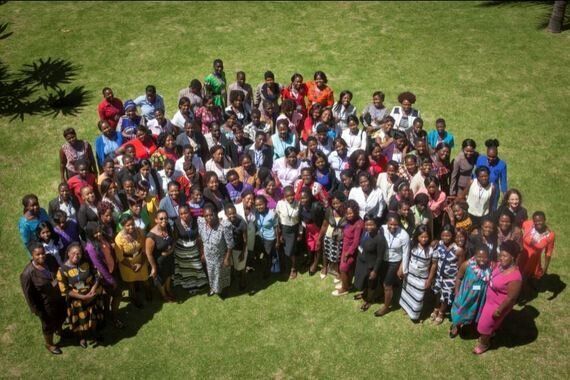
Photo credit: Camfed
Looking back on 2016, I ask myself why I am so hopeful as I write this. This was a year of change, uncertainty and in many corners of the world, true suffering. My answer is simple. I am a young African woman. And I see every day the work of the unseen young women around me whose philanthropy is changing futures across Africa. They are the ones who give me hope.
This year I found myself in the strange position of commiserating with my UK colleagues over the instability caused by the Brexit vote. In Zimbabwe we know only too well what currency devaluation and economic instability look like. The national team in Zimbabwe was the first on the phone to the Camfed International office when we saw the pound plummet against the dollar and knew the instability and uncertainty this would unlock.
Instability and uncertainty is the daily experience of tens of thousands of girls living in the most remote rural areas of sub-Saharan Africa. Girls who rise at 4am to fetch water, clean and cook. Girls from child-headed households looking after younger siblings. Girls who are nevertheless willing to walk the dangerous path to far-flung secondary schools each day, if only they are given the chance to get an education.
Natasha is one of these girls. She used to sell ground nuts to support her grandmother to raise seven children, and then walked 10 miles to get to school. Determined to excel, and with Camfed's support, Natasha completed school and became the first alumna in Zimbabwe to attend Ashesi University in Ghana. Now she mentors 12 high school students. She supports them to tackle social and academic issues and make informed decisions about their future. When she returns home in between terms, she speaks to government officials, and visits her rural school. She motivates thousands more students, and gives practical advice to girls at risk of dropping out of school.
I thought of Natasha this month on a two-week visit to Zimbabwe and Tanzania, where young women in our CAMA alumnae network came together to plan, and share their successes in 'ploughing back' into their communities. Last year, these young women across five African countries supported 123,379 vulnerable children to go to school. And they are supporting each other to succeed and start businesses. I am so very proud and hopeful not only because I am part of this group of young women, but because their incredible philanthropy far surpasses anything we could have imagined when the first 400 of us graduates set up the network in 1998.
In Nyaminyami, for example, CAMA member Fungisai was so concerned at the long distances between secondary schools (40-50km), and the risks girls face when walking to school or 'bush boarding' nearby, that she took 15 girls into her home so they can live near the school.
Another CAMA member, Irene, realised that children living on Gatshe Gatshe Island had no access to primary schools. So she took them to stay with her, bought them school uniforms and stationery, and now supports their education.
In Hurungwe, the severe drought has destroyed the crops of many of our sisters in the network, whose businesses were built on micro loans accessed through volunteering to deliver life skills and learning support to vulnerable children. What happened next amazed me. Other CAMA members with non-agricultural businesses clubbed together to help their peers meet all their repayments, to the tune of $32,000. They wanted to make sure that the reputation of the CAMA network and their district wasn't tainted!
And CAMA members are paying it forward. In Gokwe North those who have been able to access loans are now providing matching grants to new CAMA members, helping them to set up businesses after school, so they don't have to leave their districts and become vulnerable to exploitation in towns and cities. They've already provided 91 grants this year and plan to support an additional 861 new CAMA members with grants in 2017. They've transformed opportunities for young women in the district as a result.
Last week Natasha wrote, "On my last day on this earth, I would love to be described as a 'light in a sea of darkness' which means that 'hope can be found in a situation that is hard.' I struggled to glow my own candle and now I am working hard to transform other people's lives and produce many lights in a sea of darkness."
As the New Year approaches, this is the image I want you to keep in your head. Glow your own candle, then produce as many lights as you can. It's how change happens: illuminating one light at a time, until we can see the path.
